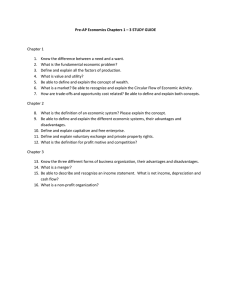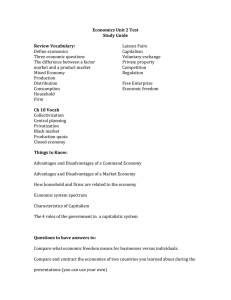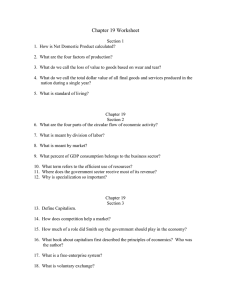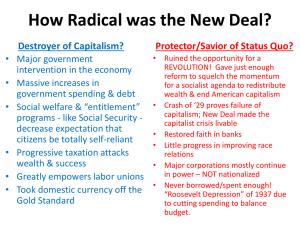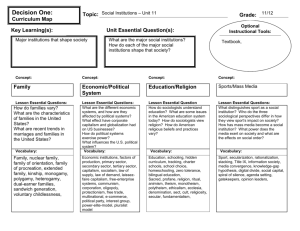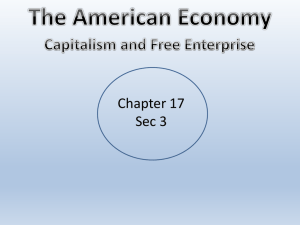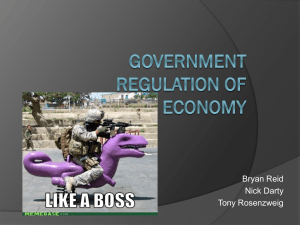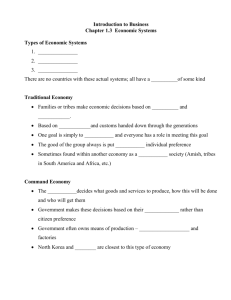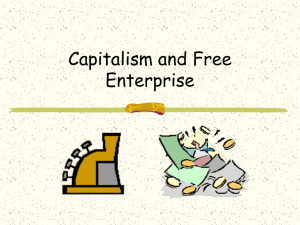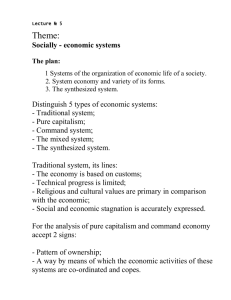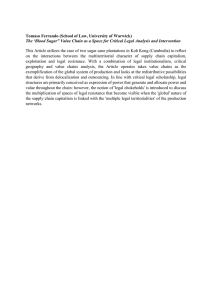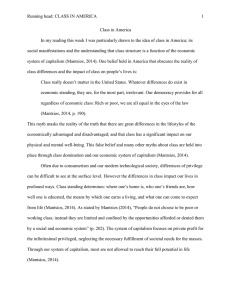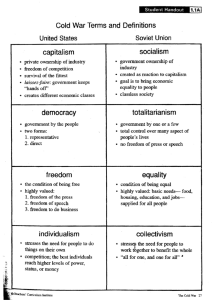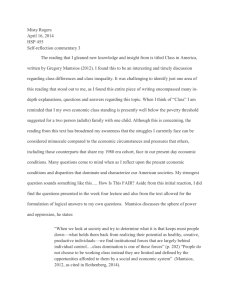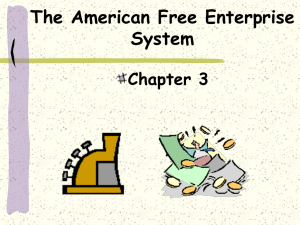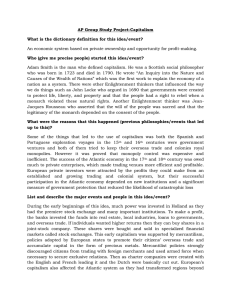Chapter 2- Economic Systems and the American Economy
advertisement
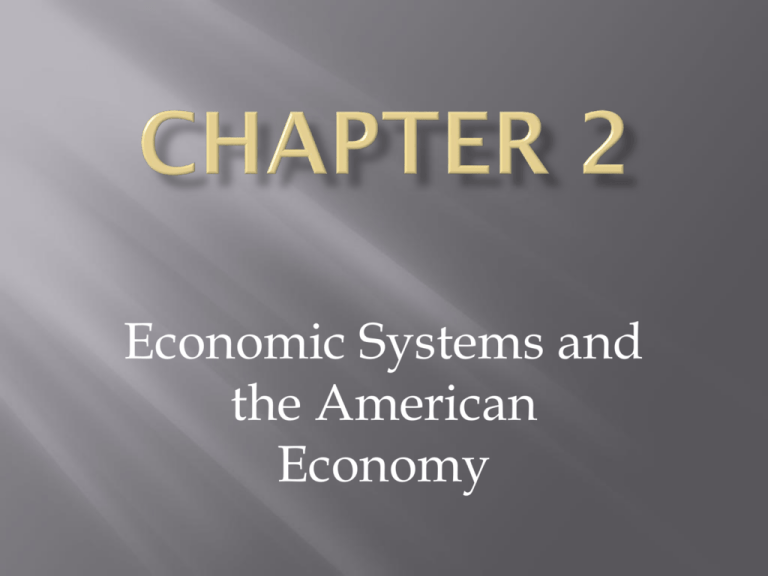
Economic Systems and the American Economy Economic Systems Economic system: way in which a nation uses its resources to satisfy its people’s needs and wants Three Questions What goods and services should be produced? How should they be produced? Who will get the goods and how will they be distributed? We live in a world of scarcity and trade-offs. If more of one item is produced, then less of another item can be produced. A decision must be made as to how the combination of available inputs will get the job done for the lowest cost? After goods or services are produced, the type of economic system under which people live determines how the goods and services will be distributed among its members. Economists have identified four types of economic systems: Traditional System Command System Market/Capitalist System Mixed System These systems are theoretical representations of systems found throughout the world. No “pure” systems exist- they are all mixed to some degree. Traditional system: system in which economic decisions are based on customs and beliefs that have been handed down from generation to generation Advantages: You know what is expected of you. Strong family and community ties. Disadvantages: Change is discouraged. Methods of production are often inefficient. Command economy: system in which the government controls the factors of production and makes all decisions about their use Advantages: Resources can be rerouted quickly Disadvantages: Lack of incentives to work hard or show inventiveness Lack of consumer choice Lack of freedom to choose your own career Market economy: system in which individuals own the factors of production and make economic decisions through free interaction while looking out form their won and their families’ best interests A market is not a place; rather, it is the voluntary exchange of goods and services. Market: freely chosen activity between buyers and sellers of goods and services. The flow of resources, goods and services, and money in a market system is circular. Circular flow of economic activity: economic model that pictures income as flowing continuously between businesses and consumers Advantages: People have many freedoms Freedom to choose a career Freedom to spend or not spend their income Freedom to own private property Freedom to take risks and earn profits Existence of competition provides consumers with an array of options from which to choose. Efficient system in determining the cost of goods and services. Disadvantages: Concern about those who are too young, too old, or too sick to work Mixed economy: system combining characteristics of more than one type of economy Most countries in the world have a mixed economy in which private ownership of property and individual decision making are combined with government intervention and regulation. Characteristics of the American Economy Adam Smith described an economic system called capitalism. Pure capitalism has also been called a laissezfaire system. Capitalism: economic system in which private individuals own the factors of production Laissez-faire: economic system in which the government minimizes its interference with the economy Free enterprise system: economic system in which individuals own the factors of production and decide how to use them within legal limits; same as capitalism There is no guarantee of success in the free enterprise system. Governments place some restrictions on businesses to protect the individual. People can buy what they want. Demand will determine what is produced. Government sets safety standards. Government regulates price in some industries. When a person invests time, know-how, money, and other capital resources in a business, that investment is made with the idea of making a profit. Profit: money left after all the costs of productionwages, rents, interest, and taxes- have been paid. Profit incentive: desire to make money that motivates people to produce and sell goods and services. The risk of failing is also a part of the free enterprise system. One of the most important characteristics of capitalism is the existence of private property. Private property: whatever is owned by individuals rather than by government Individuals control how the property is used. Private property is protected by the United States Constitution. In a free market system, the lure of profits encourages competition. Competition: rivalry among producers or sellers of similar goods and services to win more business Different people can produce similar products and services. Competing businesses try to win customers with lower prices or better quality goods and services. Businesses need to use resources efficiently to stay competitive. In the United States, most industries allow anyone to start a new business. The Goals of the Nation Economic Freedom Economic Efficiency To allow individuals to make choices To use limited resources wisely Economic Equity To exhibit fairness- protected by laws Economic Security Economic Stability To provide protection for risks we cannot control To reach a stable economy Economic growth To grow and expand the economy People have the right to do what they want within the law. People have to behave responsibly in order for the system to work. People are responsible for understanding how government policies affect the economy and to cast their votes accordingly.
